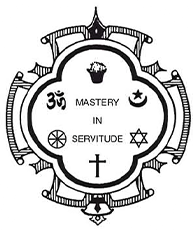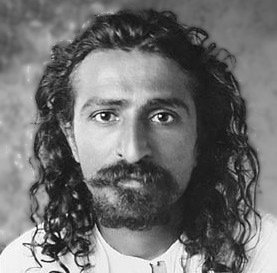All are blessed

![]() It is not as widely known as it deserves to be that in India there are several shrines that defy denominational barriers. For instance, a Jain temple at Dharmasthala in Karnataka is, and has always been, helping people of all communities settle their financial and matrimonial disputes that could all too easily lead to communal riots elsewhere. People belonging to all castes and creeds abide by its decisions.
It is not as widely known as it deserves to be that in India there are several shrines that defy denominational barriers. For instance, a Jain temple at Dharmasthala in Karnataka is, and has always been, helping people of all communities settle their financial and matrimonial disputes that could all too easily lead to communal riots elsewhere. People belonging to all castes and creeds abide by its decisions.
For instance, a Muslim summoned to the temple admitted that he had borrowed Rs. 20,000 from the complainant, and sought 10 days in which to repay the amount.
Or take Gulbarga, also in Karnataka. “If you’ve have non-vegetarian meals, please do not go inside,” says a board. Surely, that must hang in front of a temple, but, no, it does not.
The words are addressed to visitors to the “mazaar” (shrine) of a Muslim saint. But, then, that was what Hazrat Shah Ruknuddin Tola, a contemporary of Hazrat Khwaja Bande Nawaz Gesu Daraz, a 14th century saint of Gulbarga, laid down. His shrine is atop a hillock eight km from Gulbarga on the road to Alland.
Next to it is the shrine of Rama Rao, a Brahmin known for his spiritual accomplishments. Because of this Brahmin, Hazrat Ruknuddin decided to give up non-vegetarian food, and ordained that, after his death, nobody was to visit his shrine after consuming non-vegetarian food.
According to tradition, Hazrat Ruknuddin spent 40 years praying on the hillock, and people from the surrounding areas, regardless of their religion, went to him with their problems most, if not all, of which were solved.
Rama Rao had decided to go to Banaras on a pilgrimage, and went to meet Hazrat Ruknuddin on his way. Popular belief has it that Hazrat Ruknuddin asked Rama Rao to close his eyes; when he reopened them, he was stunned to see a vision of himself performing the sacred rites he had hoped to perform at Banaras and other places.
Rama Rao thereafter became Hazrat Ruknuddin’s disciple, and even used to bring meat from butcher’s shop and cook it for the saint. Other Brahmins understandably resented his actions.
One day, they buttonholed Rama Rao when he was returning from the butcher’s shop, and demanded to know what was in the bag. “Flowers”, said Rama Rao. When the bag was forcibly opened, it was found to contain flowers!
Later, Rama Rao told the saint about how meat had turned to flowers.
Impressed with his devotion, the Sufi saint swore that he himself would never again touch non-vegetarian food.
Thereupon, Rama Rao assumed the name of Shah Qadri. Both Hindus and Muslims visit the two shrines and make their offerings according to custom. According to the caretaker of the shrines, many Hindus, including Brahmins flock to them on New Moon day.
-
Book Shelf
-
 Book Review
DESTINY OF A DYSFUNCTIONAL NUCLEAR STATE
Book Review
DESTINY OF A DYSFUNCTIONAL NUCLEAR STATE
- Book ReviewChina FO Presser Where is the fountainhead of jihad?
- Book ReviewNews Pak Syndrome bedevils Indo-Bangla ties
- Book Review Understanding Vedic Equality….: Book Review
- Book Review Buddhism Made Easy: Book Review
- Book ReviewNews Elegant Summary Of Krishnamurti’s teachings
- Book Review Review: Perspectives: The Timeless Way of Wisdom
- Book ReviewNews Rituals too a world of Rhythm
- Book Review Marx After Marxism
- Book Review John Updike’s Terrorist – a review
-
-
Recent Top Post
-
 NewsTop Story
What Would “Total Victory” Mean in Gaza?
NewsTop Story
What Would “Total Victory” Mean in Gaza?
-
 CommentariesTop Story
The Occupation of Territory in War
CommentariesTop Story
The Occupation of Territory in War
-
 CommentariesTop Story
Pakistan: Infighting in ruling elite intensifies following shock election result
CommentariesTop Story
Pakistan: Infighting in ruling elite intensifies following shock election result
-
 CommentariesTop Story
Proforma Polls in Pakistan Today
CommentariesTop Story
Proforma Polls in Pakistan Today
-
 CommentariesTop Story
Global South Dithering Away from BRI
CommentariesTop Story
Global South Dithering Away from BRI
-
 News
Meherabad beckons….
News
Meherabad beckons….
-
 CommentariesTop Story
Hong Kong court liquidates failed Chinese property giant
CommentariesTop Story
Hong Kong court liquidates failed Chinese property giant
-
 CommentariesTop Story
China’s stock market fall sounds alarm bells
CommentariesTop Story
China’s stock market fall sounds alarm bells
-
 Commentaries
Middle East: Opportunity for the US
Commentaries
Middle East: Opportunity for the US
-
 Commentaries
India – Maldives Relations Nosedive
Commentaries
India – Maldives Relations Nosedive
-
AdSense code



















